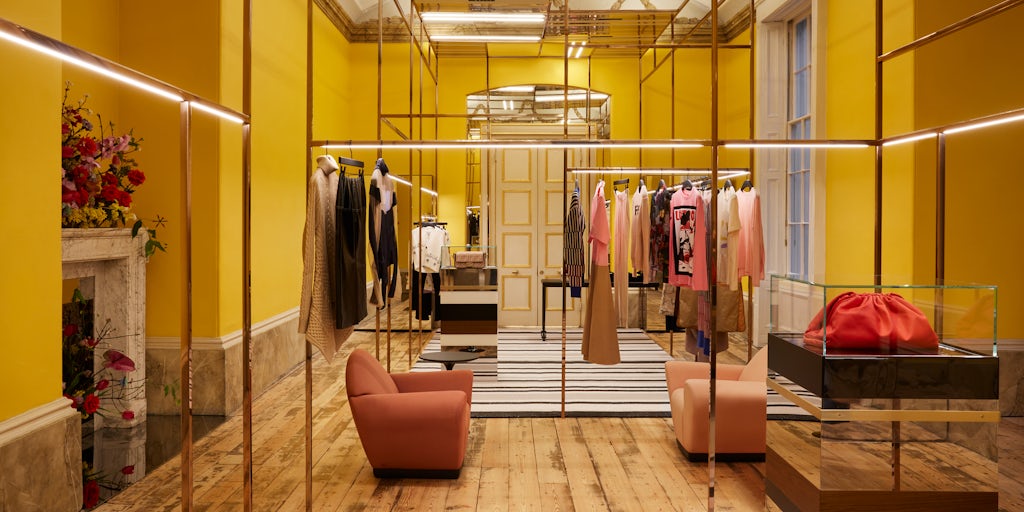Brands have to look beyond the buy-a-pair, give-a-pair model
This year has been a rollercoaster for the beauty segment, with brands shifting their attention to e-commerce and digital while also confronting social justice shortcomings.
Early-stage investor Andrea Hippeau, principal at Lerer Hippeau, has a front-row seat to emerging brands and trends, and keeps an eye on the long-term shifts in the consumer industry. New York City-based Lerer Hippeau has a special focus on DTC brands; its portfolio includes Glossier, Heyday, Glamsquad and by Humankind refillable deodorant, among others. From her vantage point, the DTC space has gained a second life due to Covid-19, following a 3-year period of expansion into omnichannel retail in order to grow. DTC brands are now reacting to the lifestyles and values of Gen Zers.
Hippeau spoke with Glossy about this altered DTC landscape, the habits of Gen-Z and the changing concept of a mission-driven brand.
How has Covid-19 impacted your investment strategy?
“As seed-stage investors, where we’re not really concerned about 1-year horizons, it’s typically a 10-year period we look at when we invest in a company. But these kinds of big market disruptions only happen once every 20 or so years, so there are more opportunities to see the systemic social changes. For example, I believe we will go to an office to work, but what does that look like? Is it a hybrid [remote and in-office] model? Are people still traveling for business?
For DTC brands, in general, this is a new opportunity where people are looking to engage with new brands online, across sectors, where maybe people were getting a little bit fatigued before. We’re still looking at new [DTC] beauty brands across skin care and hair care, and new fashion brands. It still has to be a pretty compelling story, given how crowded the market is, but I do think it’s a good opportunity for new brands in those spaces. I also oversee the facial shop brand Heyday, which is moving [its services] into more of a digital experience, since they had to close their locations due to Covid-19. It is good for them to take a step back and think more about the digital experience, because they have a lot of data that they collected through their skin therapists, so now they’re creating a whole digital world around that.”
What is the status of the DTC market now?
“Direct-to-consumer really kind of fell out of favor with venture investors in the last three years. Digital acquisition costs have skyrocketed, and that market has become very saturated, and some companies did not have the outcomes that investors had hoped for. We have always been direct-to-consumer investors and continue to be believers, but we’ve seen — at the later stages — investors shying away from DTC, up until Covid-19. We had been preaching to our portfolio companies over the last two years about having an omnichannel marketing strategy and that [they should have stores]; they need to live everywhere versus just online.
Retail will come back, but in the meantime, the pie has expanded for DTC. You have people like baby boomers who weren’t shopping online before and realize the convenience of getting things delivered directly to their door. It’s also expanded, in a way, where products that were traditionally only in retail and were overlooked by digital have now gone online. Pre Covid-19, Gen Zers were looking for experiences in a retail experience rather than buying something. It was more about having an Instagrammable moment or TikTok-able moment. I believe that these will come back, because Gen Zers still want those experiences; they’re tremendous content creators, so they need content [opportunities].”
Speaking of Gen Zers, what are your observations about their impact on the DTC model?
“There is a real fundamental difference between Gen Z and millennials. Gen Z is [more price-conscious], as they’ve seen their parents deal with things like student debt, and they really don’t want to take out credit cards or take on any debt [themselves]. They will make a price comparison and want value, which I think is different from millennials. They are also much more mission and socially conscious, so they’re looking for brands that directly align with their values and have a lot to do with the environment and social justice. They’re looking to buy a product that they’re not going to throw away in a month.”
What has shifted in the mission-driven brand space?
“Brands have to look beyond the buy-a-pair, give-a-pair model. That was a formula that many brands used for a long time to show that they were socially driven or environmentally conscious, or whatever it may be. With Gen Z, they’re looking to the company’s founders. They want to know the founders’ stories and ask, ‘Is this someone I would hang out with or look up to?’ I never really cared [about] the founder of a company when I was 15, but Gen Zers are looking out for those brand stories and real impact, not just a statement that a brand is donating an opaque number to a charity. They want to know exactly where their dollars are going, how much and what’s going into the products that they’re buying.”





